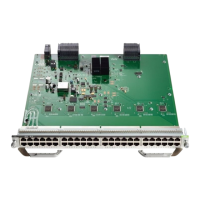CHAPTER 2
Configuring MSDP
•
Information About Configuring MSDP, page 25
•
How to Configure MSDP, page 28
•
Monitoring and Maintaining MSDP, page 47
•
Configuration Examples for Configuring MSDP, page 48
•
Feature Information for Multicast Source Discovery Protocol, page 50
Information About Configuring MSDP
This section describes how to configure the Multicast Source Discovery Protocol (MSDP on the switch. The
MSDP connects multiple Protocol-Independent Multicast sparse-mode (PIM-SM) domains.
MSDP is not fully supported in this software release because of a lack of support for Multicast Border Gateway
Protocol (MBGP), which works closely with MSDP. However, it is possible to create default peers that MSDP
can operate with if MBGP is not running.
To use this feature, the active switch must be running the Network Advantage feature set.Note
MSDP Overview
MSDP allows multicast sources for a group to be known to all rendezvous points (RPs) in different domains.
Each PIM-SM domain uses its own RPs and does not depend on RPs in other domains. An RP runs MSDP
over the Transmission Control Protocol (TCP) to discover multicast sources in other domains.
An RP in a PIM-SM domain has an MSDP peering relationship with MSDP-enabled devices in another
domain. The peering relationship occurs over a TCP connection, primarily exchanging a list of sources sending
to multicast groups. The TCP connections between RPs are achieved by the underlying routing system. The
receiving RP uses the source lists to establish a source path.
The purpose of this topology is to have domains discover multicast sources in other domains. If the multicast
sources are of interest to a domain that has receivers, multicast data is delivered over the normal, source-tree
Routing Configuration Guide, Cisco IOS XE Everest 16.6.x (Catalyst 9500 Switches)
25

